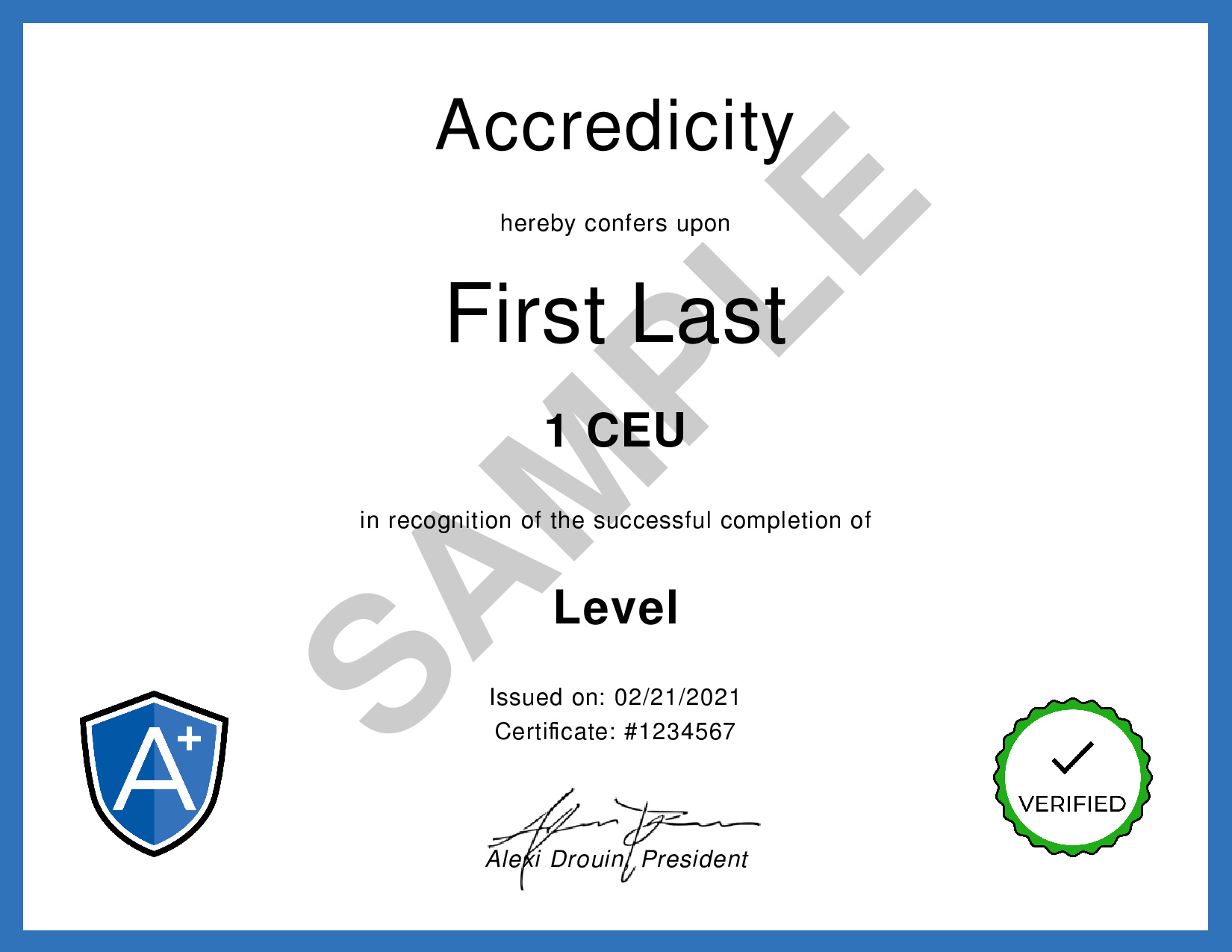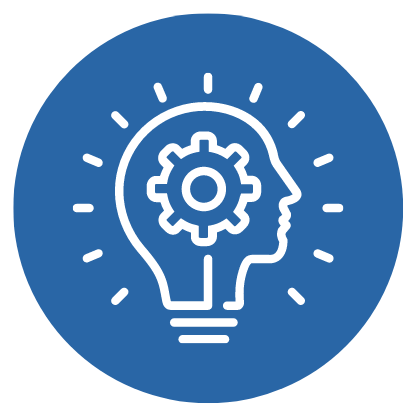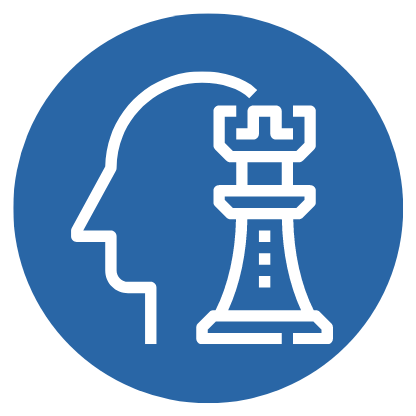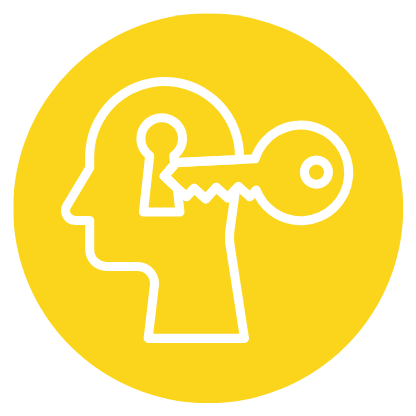Design Thinking Define: 2 | Mindful Marks
Reference: Mindful Marks. (2018, June 09). 2. Design Thinking: Define [Video]. YouTube.
We Make Your Education Count

Get the Credit You Deserve and Become the Most Attractive Job Candidate by Earning and Posting A+ Badges to Your Linkedin Profile.
Sign Up to Get Started at Accredicity
Discover how to define and refine your problem to create the perfect solution with Design Thinking Define.Design Thinking, developed by Pattie Belle Hastings, is the process of problem-solving and creating innovative solutions. The second step of this process is called Define, which is akin to hypothesizing in the scientific process. The goal of the Define step is to understand the problem and refine the definition until an accurate description of the problem is achieved. This is done by un-packing and synthesizing the data gathered from the empathize step, looking for insights and needs, and using methods such as data analysis and the five why's. Personas may also be created to better understand the target audience. Problem statements are created and refined throughout the process. The How Might We approach is also used to reframe the problem. The Define step is an ambiguous and tricky stage, but with the right methods, an accurate problem definition and innovative solutions can be achieved. Learning Outline1. Embrace ambiguity, uncertainty and make time and space to let problem definition develop Instructional ContentDesign thinking is a process used to solve complex problems by focusing on the needs of the end user. It is a creative process that involves defining a problem, empathizing with the stakeholders, ideating solutions, prototyping, and testing. The second step of the design thinking process is called define, and it is the most important step in the process. In this video, the speaker explains how this step can help us better understand the problem and create solutions that are tailored to the needs of the user. The speaker explains how to define the problem by using data from the empathize step. This data should then be synthesized and analyzed, and user personas should be created. The speaker also suggests using the “Five Why’s” technique, which allows us to dive deeper into the problem and uncover different perspectives. Additionally, the speaker encourages us to use the “How Might We” reframing technique to gain a better understanding of the problem. By defining the problem, we can begin to understand the user’s needs and develop solutions that will meet their needs. This video provides an overview of the define step in the design thinking process and gives viewers a better understanding of how to define a problem. Leadership
|

Design Thinking is like cooking a really tasty dish! In the second step, Define, we're like chefs who have to figure out what ingredients we need to make the dish. We take data from the first step, Empathize, and analyze it to find out what the problem is. We look for needs and insights, and use methods like the 'five why's' to drill down and figure out what the problem really is. We try different combinations of ingredients until we get the perfect recipe for solving the problem. It's tricky, and it takes time, but it's totally worth it! Video Quotes"We put the data that we've collected and we might find out at this stage that we need more data and that's why I say it's not linear it's not necessarily step by step you might be continuing to collect data as your divine defining the problem." - Pattie Belle Hastings "This is the the problem the problem definition stage is probably the most ambiguous and tricky to describe because you're kind of floating in a sea of Unknowing so you have to embrace ambiguity." - Pattie Belle Hastings "We're going to come up with multiple problem statements and we're going to redefine and rewrite our problem statements over again and one wonderful way that we use a lot is the how might we." - Pattie Belle Hastings Related Quotes"Design Thinking is a human centered approach to innovation that draws from the designer's toolkit to integrate the needs of people, the possibilities of technology and the requirements of business." - Dennis Boyle "Design Thinking is an approach to solving problems that is focused on the user and their experience." - Tim Brown "Design Thinking is a process that starts with understanding the people you're designing for and ends with a plan for a winning solution." - Bernadette Jiwa Competencies1. Creativity and Innovation Learning Outcomes1. Analyze the data gathered from the empathize step in the design thinking process to determine the problem statement(s). 2. Evaluate the user research to reframe the problem statement. 3. Synthesize the collected data to identify insights and needs. 4. Create personas based on the general population or targeted audience. 5. Apply the five why's to uncover the root causes of the problem. 6. Utilize the “how might we” reframing technique to identify different solutions. Sample Answers1. In the define step of the Design Thinking process, we take the data from empathy and synthesize it to uncover insights and needs. We also use methods such as data analysis, the five why's and creating personas to gain a deeper understanding of the problem. 2. We also use the "How Might We" reframing method to explore different ways of approaching the problem. This involves coming up with different solutions to the problem and redefining the problem statement multiple times. 3. Lastly, the define step requires us to embrace ambiguity and uncertainty and make space for the problem to be developed and refined until the actual problem is identified. This is an important step in the Design Thinking process to ensure we are tackling the right problem. Pattie Belle HastingsPattie Belle Hastings is a designer, speaker, educator and a leader in international design and design thinking. She has over 20 years of experience in the field of design and has been a part of several prominent organizations such as the International Design Council, the Design Management Institute and the Designers Accord. She is an expert on Design Thinking and how it can be used to solve complex problems. She is currently the Chief Creative Officer at the Designers Accord, a non-profit organization dedicated to advancing the social, environmental and economic implications of design. Designers Accord. Learning DesignThe three competencies of creativity and innovation, problem solving, and strategic thinking are important to learn in a leadership course because they are key skills necessary for effective leadership. Creativity and innovation allows leaders to come up with innovative solutions to problems and open up new possibilities for their organization. Problem solving allows leaders to identify and address issues within their organization, while strategic thinking helps leaders think critically about the long-term implications of their decisions. AssessmentQ. What is one of the methods used to help define the problem in the design thinking process? A. A. Five Why's QuestionsQuestions for Students: Questions for Real-Life Scenarios: KeywordsDesign Thinking, "Problem Definition", "User Research", "Data Analysis", "Five Whys", "Personas", "Problem Statements", "Airport Security". Facts1. Design Thinking is an iterative process that encourages ambiguity and reframing of problems. Trends1. Develop an app or website that can be used to simplify the problem definition process and provide structure to the design thinking process. SourceThis learning instructional guidance was formulated using the GPT-3 language model created by OpenAI. ShareDesign Thinking: Defined! Step 2 of the process calls for problem definition. We must take time to develop, refine & reframe the problem until we understand what needs to be solved. #DesignThinking #ProblemDefinition 🤔 💡 🛠 @Accredicity |








 41 Creds - Leadership
41 Creds - Leadership



